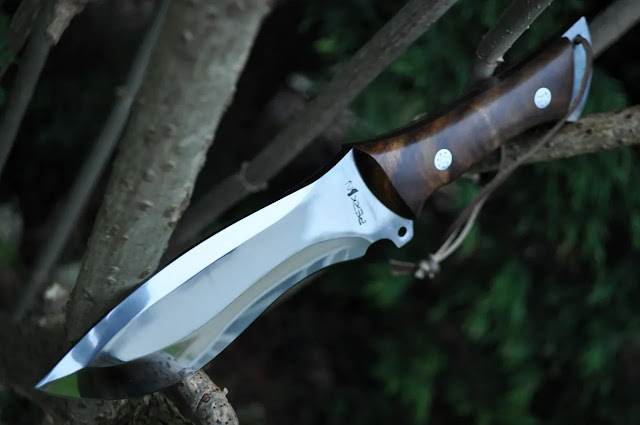Things To Keep In Mind When Buying Knives
Knives are often bought as keepsakes, something that might be passed down as a family heirloom, or for practical use, while hunting, camping of self-defence. Whatever may be the reason for you to look out for a knife, there are a few fundamental things to keep in mind while buying knives. Keep reading to know more.
1. Know the material
Many knife enthusiasts are already well-versed with everything they need to know when buying knives: the history of knives, the material composition of different kinds of alloys used in making knife blades, the perfect handles for every use, and everything else there is to know. However, if you’re a beginner, you must keep in mind that knife blade material matters a lot. Your choice of blade material decides the properties of your knife - strength, toughness, retention, wear & corrosion resistance, etc.
As a beginner, it is ideal for you to use a common, 440c stainless steel knife. It gives the toughest, sharpest blade and holds the edge the longest without much maintenance required. It is ideal for hunting, self-defence in the wilderness, skinning & gutting the game, or being used as a handy tool during camping; you can use this blade anywhere without worrying much about the potential build-up of rust & corrosion.
If you’re buying common folding knives and expecting them to work the same as hunting knife blades, you might in for some trouble.
You must keep in mind what you are buying your knife for and thus, choose your blade, handle style and knife style accordingly. If you are hunting for a smaller game, you can buy a small, multi-purpose knife. However, for a camping trip in a known area of the wilderness which doesn’t have many wild animals lurking around, you could have a simple, toolkit knife.
3. Find the perfect sheath
Some knives don’t require a sheath at all, for instance, the folding knives. However, some knives require a sheath without a doubt, for instance, a tracker. Bigger hunting knives always need to be clasped in a sheath and attached to the hip for easy access when in the wilderness.
You might also keep in mind that each sheath is different, with regards to style and material; a tracker sheath is different from a combat knife. Sheaths are available in polymers, plastic, Kydex, wood and more; you must choose a sheath material based on the use case of the knife.
The thrill of buying a knife is always present, whether you are a first-time buyer or a knife connoisseur. But you should always bear in mind the abovementioned fundamental checklist while picking out the knife best suited for you and your expedition.


.png)

Comments
Post a Comment